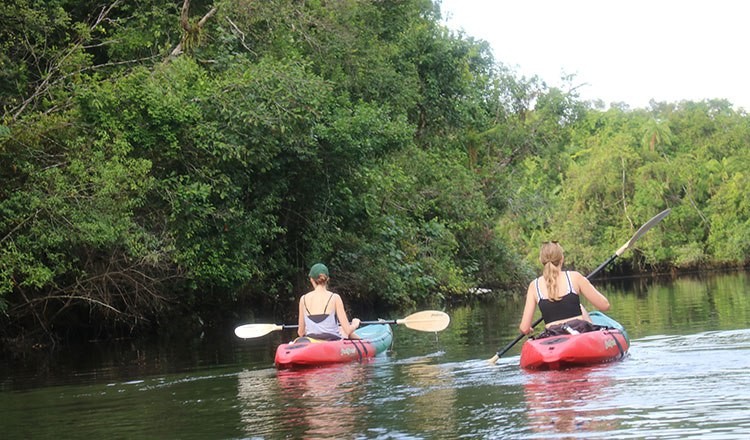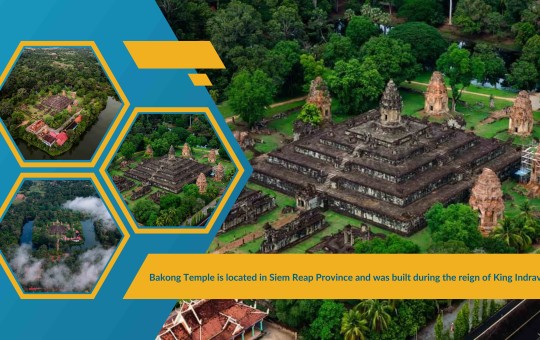
Well deserved recognition for nature resort
After years of bringing a unique travelling experience to those who love going off the beaten track while also contributing to environmental protection, the Cardamom Tented Camp has finally been recognised internationally after the resort was selected as the recipient of the 2022 Hotel Investment Conference Asia Pacific (HICAP) Sustainable Hotel Award for Climate Action.
Opened in 2017, Cardamom Tented Camp is situated in Koh Kong province’s Botum Sakor National Park, the Kingdom’s largest national park covering over 171,000 hectares. The massive ecologically protected park-land is home to some of the world’s most endangered species, including the Pileated gibbon, Sunda pangolin, Bengal slow loris and the Indochinese tiger, along with tens – if not hundreds – of thousands of tropical fauna and flora.
HICAP is annually awarded for building preservation/adaptive reuse, positive community impact, and sustainable design. Seven judges, mostly from institutional sustainability backgrounds, assessed the submissions.
According to The BHN Group, which ran the HICAP event on October 12, the judges based the climate action decision on Cardamom Tented Camp’s ability to work with partners to preserve 180 square kilometres of lowland rainforest in the Botum Sakor national park in southwest Cambodia.
“On climate action, it is estimated that the forest the camp helps protect sequesters about 108,652 tonnes of carbon per year, according to Wildlife Works,” the group said in its statement.
Wildlife Alliance, the nonprofit environmental advocacy group, has been working together with the government to protect the rainforest and wild animals in the area. They have set up ranger stations with law enforcement officers to patrol over 8,000 square kilometres of the Cardamom rainforest landscape.
“The Tented Camp was set up by Wildlife Alliance as a way to protect Botum Sakor National Park from poachers and loggers,” Allan Michaud, the lodge manager and a British wildlife conservationist, said. “We contribute 20% of the rangers’ salaries at the moment, but the target in four or five years is to cover 100%.”
According to Michaud, since the rangers have been stationed there for almost ten years, there has been no illegal logging in the forest while poaching has significantly decreased.
“We also believe tourism is a good and sustainable way to preserve and prosper the nature and communities in this protected area,” he added.
To get to the camp, you start your journey from the heart of Phnom Penh, head south-east on National Road Number 4 to Koh Kong province for around five hours and turn off Road 48. After about another hour, you will reach a place where you are received by a group of friendly guides who will bring you to the camp on a boat.
Lasting about 20 minutes, the boat cruise is the beginning of an exhilarating adventure. As the boat travels along Prek Ta Chan River, you will be amazed by the view: the picturesque river with crystal clear water, trees and vegetation on both sides, wild birds and, on a lucky day, wild animals such as gibbons, roe deers, wild boars and so on. The air is cool and fresh and there is no noise apart from those made by the animals, which are enough to make you forget the noise of the bustling city.
Once you dock at the wooden pier, you will notice the internet is hardly working and the reception is poor. Herein lies the key to you having fun: being disconnected from the rest of the world and connecting with Mother Nature. After a filling lunch, you will be taken to your tent.
After that, you can enjoy a cold drink at the bar/restaurant while playing a game of chess or listening to Michaud recounting how the camp was founded two-and-a-half years ago with the tagline, “Your Stay Keeps the Forest Standing”.
The ecologically friendly camp ground has nine large safari-style tents within Botum Sakor National Park. The tents provide a fully encapsulated 30-square-metre area with a queen-size bed, hot-water showers and 24-hour electricity. There is also a fan, although you may not need to use it since it can get very cold at night. An added plus: a Western toilet.
After dinner, you should sleep earlier because there is a big day ahead waiting for you.
When the sun rises, you put on your long pants and walking shoes and eat a hearty breakfast from the buffet to garner enough energy for the trek up which lasts the whole morning. An English-speaking guide will accompany you on the arduous trip.
You will start by getting into one of the kayaks and row to the ranger station, located about four kilometres from the camp. It can be a tiring voyage, but you will be hypnotised by the breath-taking views and be refreshed by the fresh morning air – not to mention the chance to catch a glimpse of some rarely seen animals and birds.
All the guides know how to imitate animal sounds to bring them out in the open, which is quite an amazing experience for city folks.
When you arrive at the rangers’ station, you get to take a break and listen to the rangers talking about their work and how they are risking their lives to save the ecosystem from people’s greed. Visitors are welcomed to participate in their project to protect the evergreen forest and wildlife including joining in patrols.
After about half an hour, you get to hike back to the camp, which is one of the best ways to learn about the local wildlife, nature and external influences threatening the protected area.
It is unlikely for you to run into a wild animal, but you can see traces of them either through footprints left along the trail, food remnants left behind or them scuttling off after they notice you. I discovered a sun bear’s paw print on a hardwood tree and learned that sun bears close their eyes when they are getting honey from a beehive.
You have the rest of the day to yourself to do all the things you like or simply relax before heading back the next day. The thought of leaving all this behind may be unsettling but a beautiful sunset on the river will definitely cheer you up.




